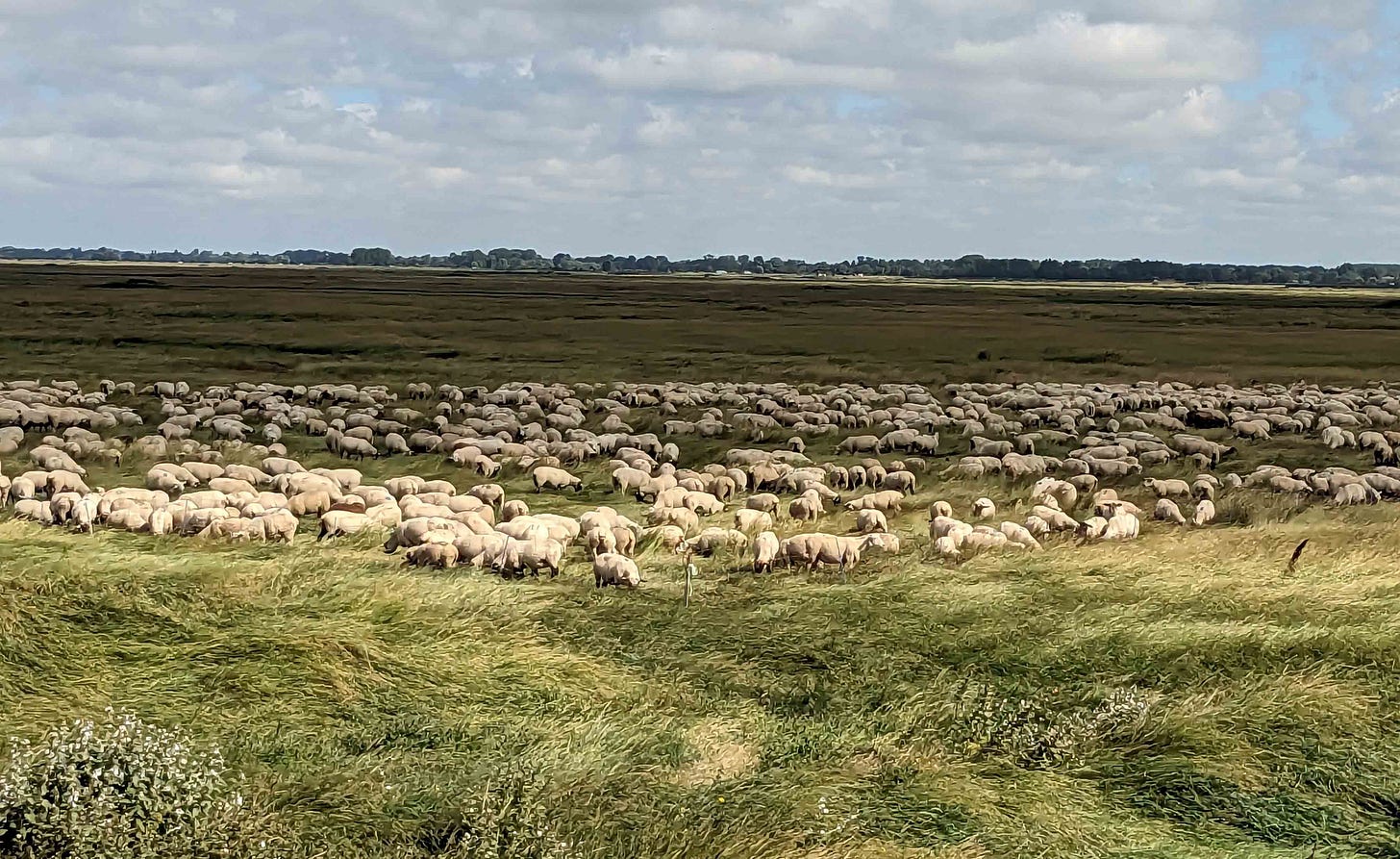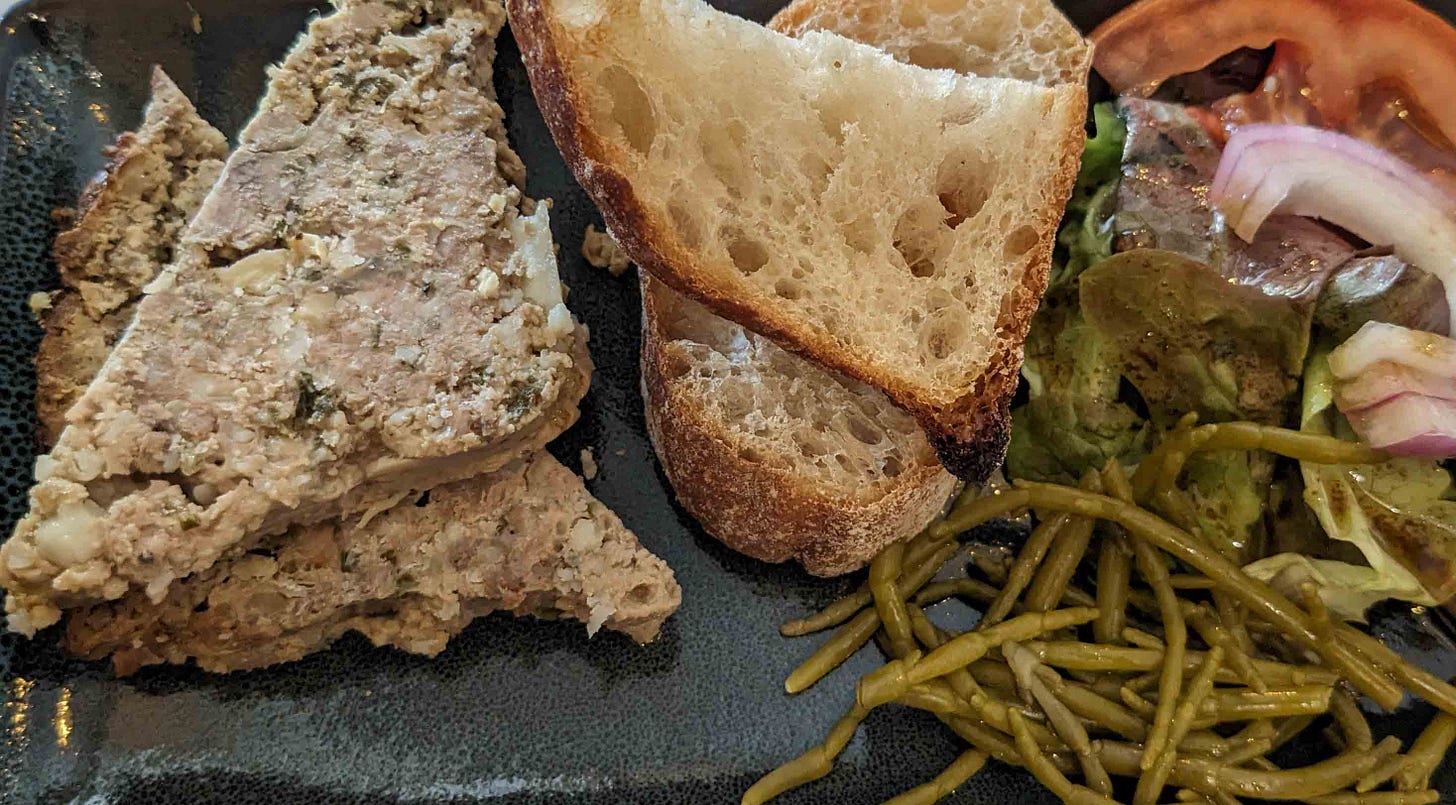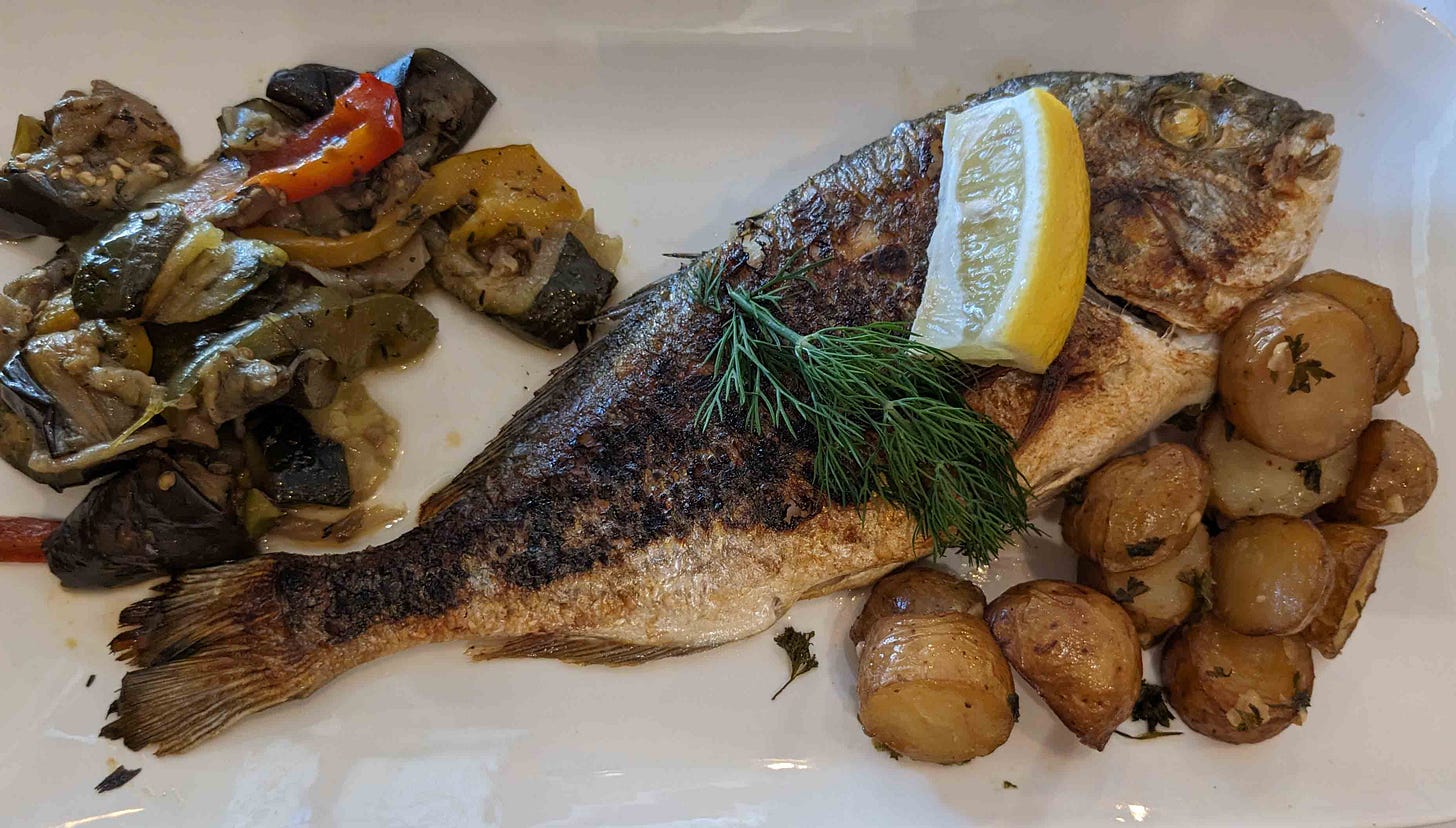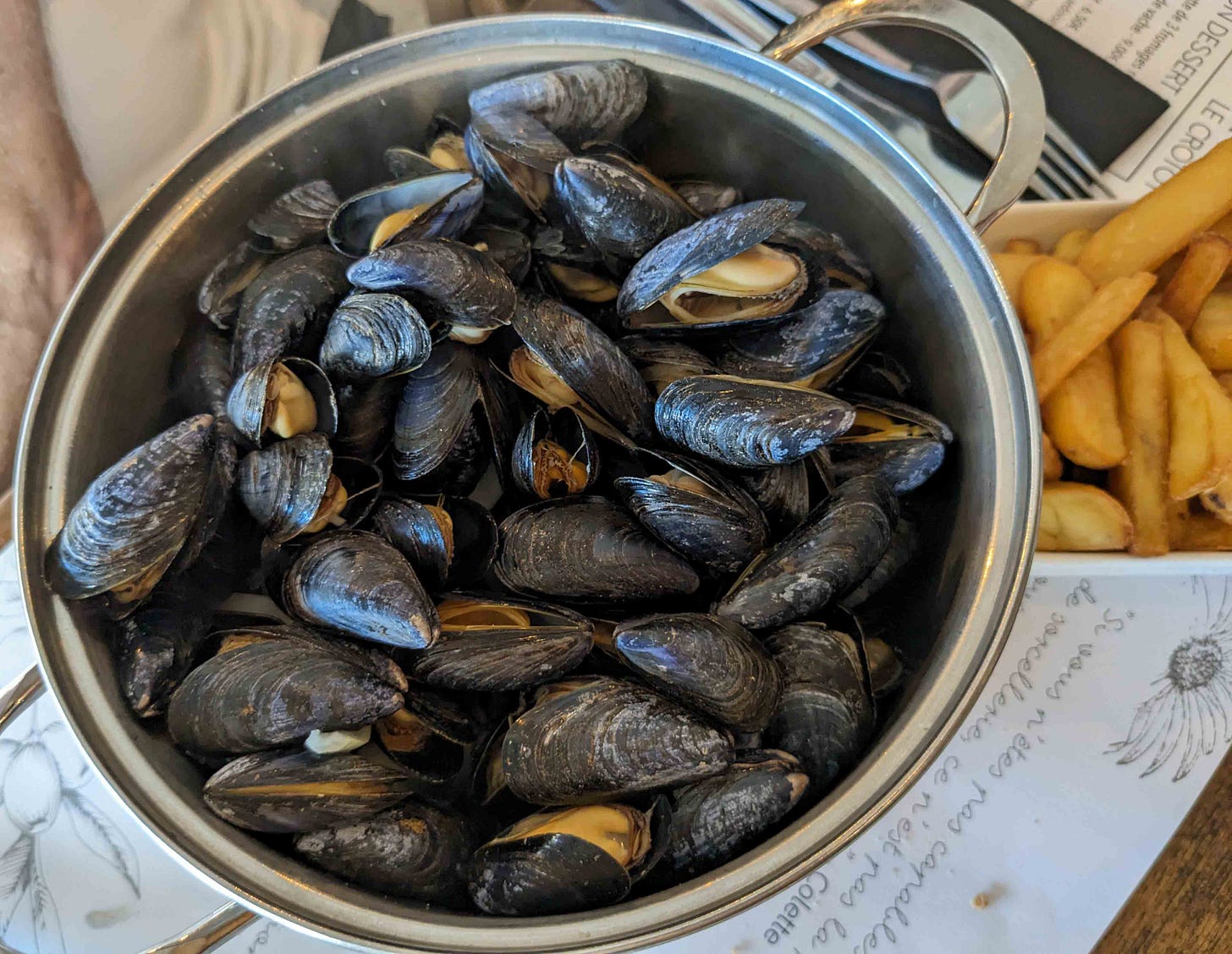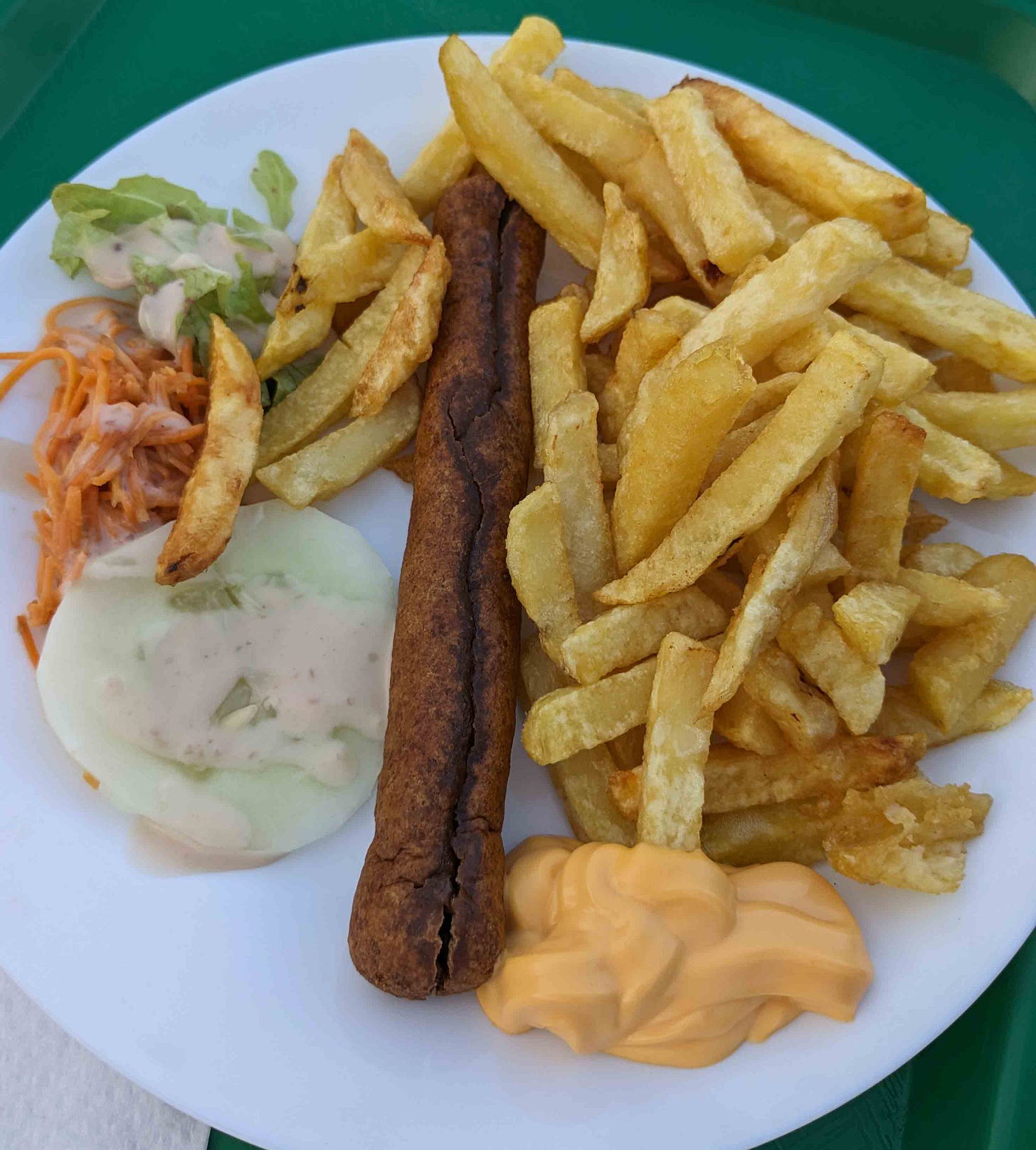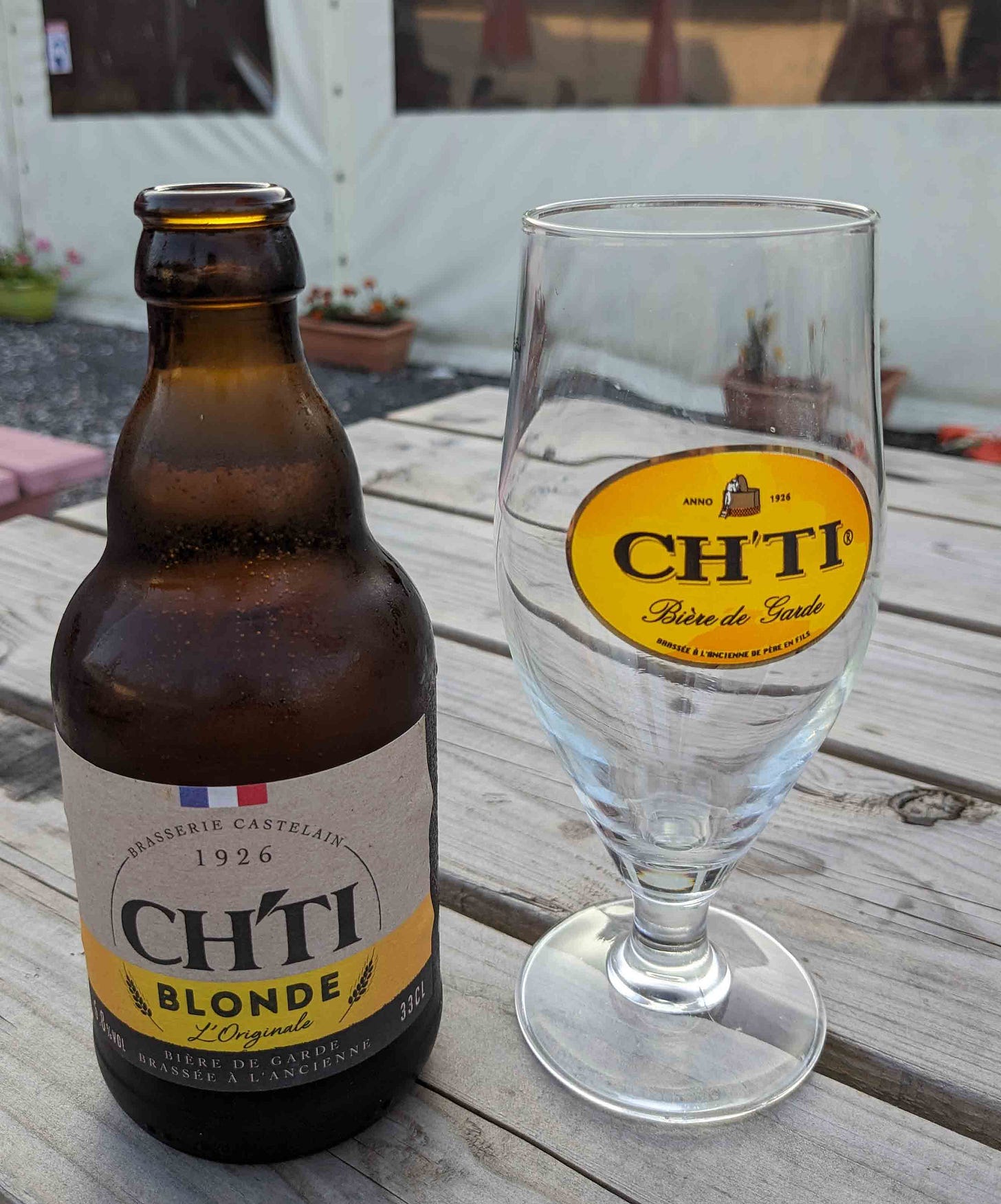Vacation in the North of France
We left for our ten-day summer vacation on a Monday morning in mid-August. We had a seven-hour drive ahead of us, but since we are in France and I was outnumbered three to one by French people, we traveled in French style. This means stopping for coffee after two hours, then stopping again for lunch at the four hour mark. We had our picnic lunch supplies with us, but eating in the car is simply not done in France. Christian’s car is a 2004 model, and no one has ever eaten in it or drank anything other than water in the 15 years that he’s owned it. I have to admit that it’s MUCH cleaner than my car, which I’ve had for 16 years and where my daughters and I have eaten hundreds of meals. We stopped at a rest stop along the autoroute, and even though it was chilly and there were no tables, we got out of the car and stood on the grass to eat our lunch.
I wasn’t expecting a lot from our vacation to the north of France. Christian chose the destinations, and the region was new to him too. Our first stop was Mers-les-Bains, a 19th century seaside resort on the English Channel. From here we could also visit the Baie de Somme, the huge estuary of the Somme River. For this part of the trip we were in the region that before 2016 was known Picardie; after that point it was combined with the Nord-Pas-de-Calais into a larger region called Hauts-de-France.
I was surprised by how new and different the region looked. This happens to me a lot in France, and by now I should know that Christian is right: there is a lot to see in France, which has much more physical and cultural variation over short distances that the US does. The buildings in the north were mostly red brick, with steep roofs designed for snow. The beaches along the English Channel were beautiful and the water was a welcoming blue, a far cry from the gray dreariness that I had somehow always imagined. We were also very lucky with the weather: it only rained on us twice briefly in ten days.
Mers-les-Bains was a fishing village until the late 19th century, when it was transformed into a seaside resort for the wealthy thanks to the popular belief that breathing the sea air and “taking the waters” by bathing in the ocean was good for health. The Belle Epoque style villas that fill the town are beautiful and well maintained, classified as part of France’s cultural heritage.
Its sister city on the other side of a small river outlet is Tréport, a much more working class fishing village to this day. We saw a lot of typical fisherman’s cottages, one single room downstairs with a single bedroom above.
There was a municipal fish market in Tréport where everything was fresh caught and very reasonably priced: I was tempted to buy all of my favorites (lobster, oysters, squid) but we were on our way elsewhere and wouldn’t be back at the apartment for hours.
We drove north and explored the Baie de Somme. We started our excursion in Saint-Valery-sur-Mer, which I was surprised to discover was the debarkation point for William the Conqueror’s famous journey across the Channel in 1066. In French he is known as Guillaume le Conquérant. We took an antique coal-fired steam train across the bay, a trip that was less interesting than we hoped.
Steam engine being refilled with water
We didn’t see much wildlife; there were a lot of artificial ponds with duck hunting blinds, and several groups of grazing sheep. I learned that lamb from these estuarine pastures has an AOP status and is called, L’agneu des prés salées, lamb from the salty fields. We saw several butcher shops that featured it and I would have liked to buy a roast and cook it back at our apartment, but again it was too complicated to transport in the summer heat.
We had an excellent lunch in Crotoy on the other side of the bay. Christian and I both had the famous salty fields lamb in terrine for the entrée, and it really was delicious. Terrine is on the left, and the green stuff bottom right is called salicorne, a salty plant that grow in estuaries. English translations are samphire, pickleweed, or sea asparagus.
I had a whole sea bream, served with the head as it always is in France, and Christian had an enormous serving of the local mussels, which were a smaller and sweeter variety. I helped him finish them and didn’t need to eat for the rest of the day.
We spent these first few days Picardie, but very close to the Nord-Pas de Calais – the region that is the focus of a famous film had the greatest box office success ever in France, called Bienvenue chez les Ch’tis. The English title is Welcome to the Sticks. People from this area are nicknamed Ch’tis, and the region is known for its cold climate and for people who talk with strange accents and eat weird foods. I suppose it’s not that different from Minnesota: we have the cold, regional foods like tater tot hot dish and lutefisk that other Americans don’t eat, and I laughed out loud last week in Italy when I heard a Minnesotan tourist say “Ya, you betcha” with our particular local accent.
In the film, the protagonist from the south of France is traumatized the first morning by the breakfast offered by his Ch’ti hosts: Ricoré instead of coffee, and bread with Maroilles, a particularly pungent regional cheese. Ricoré is a powdered instant breakfast drink, described by Nestlé on their French website as “a hot beverage with a unique taste.” It’s made with approximately one third coffee and two thirds chicory: a bitter root that has many of the same aromas as coffee when dried and roasted, but none of the caffeine.
Chicory was first mixed with coffee in Holand in the 1750s, but it became very common in France in the early 19th century during the Napoleonic wars, when there were coffee shortages. The French brought this knowledge to New Orleans, where it came in useful during the Civil War. This is why the famous coffee at Café du Monde in New Orleans is still made today with chicory. Theirs is more coffee than chicory though. Chicory grows in France and is much cheaper than coffee: it’s telling that Nestlé introduced Ricoré in 1933, between the wars, in a period when there were shortages and rationing in France.
We already had the Ricoré with us: Christian’s parents drink it every morning - in bowls of course. There was not a single mug in their house until I started visiting regularly and bought some. Christian grew up with Ricoré. He likes it, still drinks it regularly, and he prefers it to the taste of instant coffee.
We bought half of a Maroilles in the supermarket on our first day, though we ate it with dinner rather than at breakfast. All of us loved it – even the two 17 years old boys with us, Christian’s son and his close friend. It has a strong but delicious taste, creamy and full bodied. We ate it all. I wanted to buy more, but once we crossed the boundary between the Hauts-de-France and Normandy it was suddenly not easy to find. I can’t believe that I didn’t take a picture of it, but it appears that I did not. It’s a square cheese, orange on the outside from a washed rind. If you buy half, it’s cut diagonally, like a grilled cheese sandwich. You’ll have to google it to see what it looks like.
Christian and I went for a hike along the cliffs the next day. As a geographer, I should have been much less surprised than I was to find the same white chalk cliffs that are so famous in Dover on the French side of the Channel as well.
We came back to the apartment hungry, and enjoyed another local specialty that we found in the supermarket, Pot’je Vlees, a Flemish dish that has existed since the Middle Ages. My guess it that it probably developed as a way to use the leftovers: it’s a mix of meats (pork, rabbit, chicken and veal) with aromatics like juniper berries cooked into a solid held together with savory gelatin – like an aspic, which was popular in the US in the 1950s but hardly exists anymore. It was surprisingly good, and again we ate all of it.
The label suggests eating it with fries and a good beer, both also specialties of the Hauts-de-France, which borders Belgium. On our last evening, we stopped at a tiny roadside café advertising frites, wanting to have them before leaving the region that is known for them. As you can see below, they are fried twice at two different oil temperatures, taken out in between to cool, which gives them their crispiness and delicious fattiness that goes perfectly with salt.
I just had fries, but Christian ordered the fricadelle that he had been wanting to try: a local version of a hot dog, made like all hot dogs with leftover cuts of meat that in this can include veal, pork, chicken (including skin), or horse, plus breadcrumbs, dehydrated onion, and nutmeg. I tasted it, but it was definitely not for me.
He also has so called “American sauce” on his plate, a mixture of ketchup and mayonnaise. Also not for me.
We shared a Ch’ti brand beer and said goodbye to the Hauts-de-France. Next it’s on to Normandy.






